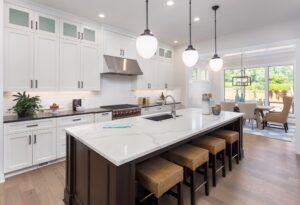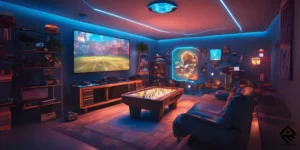Installing Smart Lighting Systems: The Future of Home Renovation
At RenovationDay.com, we believe that a home renovation should not only enhance aesthetics but also improve functionality. One of the best ways to achieve this is by integrating smart lighting systems into your home.
Smart lighting is a modern innovation that allows homeowners to control their lights remotely, automate lighting schedules, and customize brightness and color. These systems can be controlled via smartphone apps, voice assistants (Alexa, Google Assistant, Siri), motion sensors, and even automation routines. With features like energy efficiency, security enhancements, and improved ambiance, smart lighting is transforming the way people interact with their homes.
In this guide, we’ll cover the benefits, costs, installation process, and best smart lighting options available today.
Why Smart Lighting is a Must-Have in Modern Homes
Smart lighting offers more than just convenience—it enhances energy efficiency, security, and the overall atmosphere of a home.
1. Remote and Voice-Controlled Lighting
With smart lighting, you can control your home’s illumination through an app or voice assistant. This means you can dim lights, change colors, or turn lights on/off even when you’re away from home.
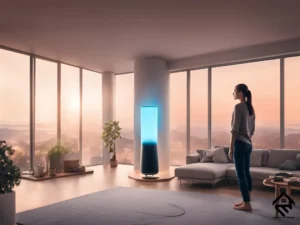
For real-life smart lighting setups, take a look at this video on YouTube showcasing home automation in action.
2. Energy Efficiency and Cost Savings
Smart lighting systems consume significantly less power than traditional lighting, leading to lower energy bills.
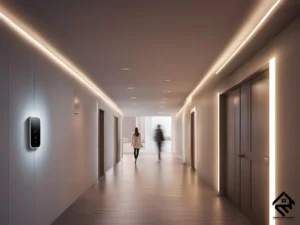
How Much Does Smart Lighting Cost?
While smart lighting is an initial investment, it results in long-term savings on energy and maintenance. Here’s an overview of typical costs:
-
- Basic Smart LED Bulbs: $10 – $25 per bulb
- Color-Changing Smart Bulbs: $20 – $50 per bulb
- High-End Smart Bulbs (Philips Hue, LIFX): $40 – $80 per bulb
- Smart LED Strips (for cabinets, TVs, etc.): $30 – $100 per set
- Smart Switches: $25 – $100 each
- Smart Home Hubs (if needed): $50 – $150
According to the U.S. Department of Energy, LED bulbs use at least 75% less energy and last 25 times longer than incandescent lighting (source). Over time, switching to smart LED lighting can lead to hundreds of dollars in savings on electricity bills.
Are smart lights really worth the investment?
Yes. While initial costs may be higher, the combination of lower energy consumption, automation, and extended bulb lifespan makes smart lighting a cost-effective solution for modern homes.
3. Improved Home Security and Automation
Smart lighting enhances security by allowing homeowners to:
-
- Schedule lights to turn on and off at specific times, simulating occupancy when traveling.
- Connect with motion sensors to illuminate entryways and deter intruders.
- Integrate with smart security systems, such as Ring or Nest cameras, for added protection.
A study from SafeWise (source) found that well-lit homes are less likely to be targeted by burglars. Smart lighting can be a crucial part of an overall home security strategy.
4. Customizable Ambiance and Mood Lighting
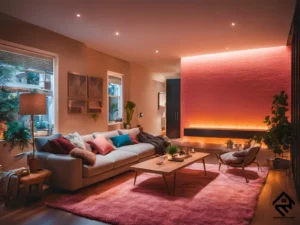
Smart lighting lets homeowners personalize their space by adjusting brightness and colors to match different activities, such as:
-
- Soft, warm white lighting for relaxation and bedtime.
- Cool white lighting for kitchens and home offices to enhance focus.
- Color-changing lighting for entertainment setups or holiday themes.
For real-life ideas on how to use smart lighting in your home, check out this Pinterest collection.
Choosing the Right Smart Lighting System
When selecting a smart lighting system, consider compatibility, features, and installation ease.
1. Compatibility with Smart Home Platforms
Ensure that your smart lights work with your existing ecosystem:
-
- Amazon Alexa & Google Assistant: Most smart bulbs work with these platforms.
- Apple HomeKit: Some brands require HomeKit-certified devices.
- Zigbee/Z-Wave Systems: Require a hub (e.g., Philips Hue Bridge or Samsung SmartThings).
Do I need a hub for smart lighting?
Not necessarily. Some bulbs, such as TP-Link Kasa and LIFX, connect directly to Wi-Fi, while Zigbee-based systems like Philips Hue require a hub for additional features.
2. Best Smart Light Bulbs for Different Needs
-
- Best Overall: Philips Hue (offers a range of white and color bulbs, requires a hub)
- Best Budget-Friendly: Wyze Bulbs (affordable, no hub needed)
- Best for Color Variety: LIFX (vibrant colors, integrates with Alexa, Google, and Apple HomeKit)
- Best for Smart Homes with Hubs: Sengled Smart Bulbs (works with Zigbee hubs like SmartThings)
For a detailed comparison of smart bulbs, check out this CNET review.
Installation Guide: How to Set Up Smart Lighting
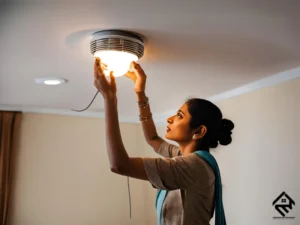
Step 1: Choose Your Smart Lighting Setup
Decide whether to start with individual bulbs, smart switches, or LED strips. For whole-home automation, a combination of smart bulbs and switches is ideal.
Step 2: Install Smart Bulbs or Switches
-
- Smart Bulbs: Replace existing bulbs with smart ones.
- Smart Switches: Requires installation into the electrical system.
Can I install smart switches myself?
If you are familiar with electrical wiring, you can install smart switches yourself. However, for high-voltage wiring, it is recommended to hire a licensed electrician.
Step 3: Connect to Wi-Fi and Configure the App
Download the app from the manufacturer, pair your devices, and assign them to rooms or groups for easy control.
Step 4: Set Up Automation and Voice Control
-
- Link smart lights to Amazon Alexa, Google Assistant, or Apple HomeKit.
- Set up schedules, such as turning lights off at bedtime or dimming lights in the evening.
For a step-by-step installation guide, visit this Smart Home Guide.
Smart Lighting for Every Room
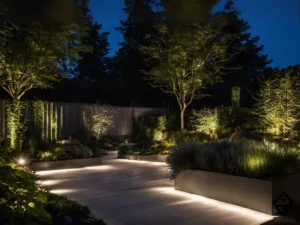
-
- Living Room: Adjust lighting for movies, reading, or entertaining guests.
- Bedroom: Use dimmable warm light for relaxation and bright white light for waking up.
- Kitchen: Motion-sensor lights can turn on automatically when you enter.
- Outdoor Spaces: Weather-resistant smart lights improve security and ambiance.
Can smart lighting be used outdoors?
Yes. Brands like Philips Hue Outdoor, Ring, and Wyze offer weather-resistant smart bulbs and floodlights.
Upgrade Your Home with Smart Lighting Today
Ready to transform your home with smart lighting? At RenovationDay.com, we specialize in custom home renovations, including smart home upgrades. Whether you need installation services or expert advice, our team is here to help.
Contact us today for a free consultation, and let’s make your home brighter, smarter, and more energy-efficient.
For more inspiration, visit this expert guide from The Verge and see how smart lighting can transform your space.

